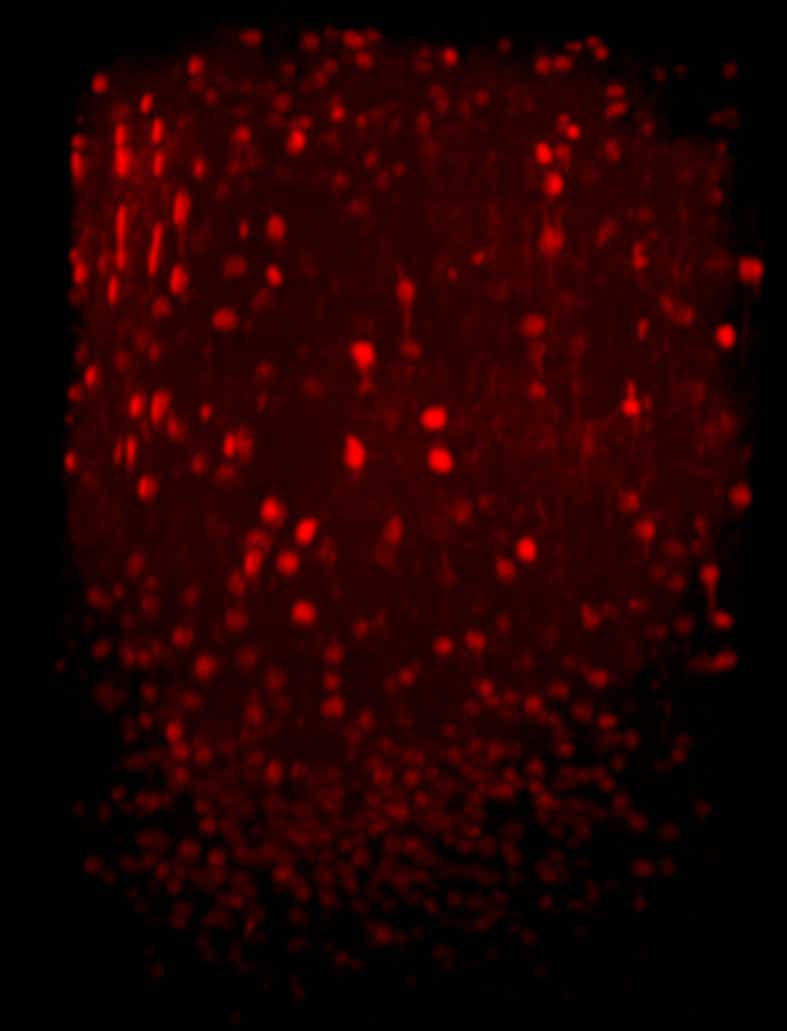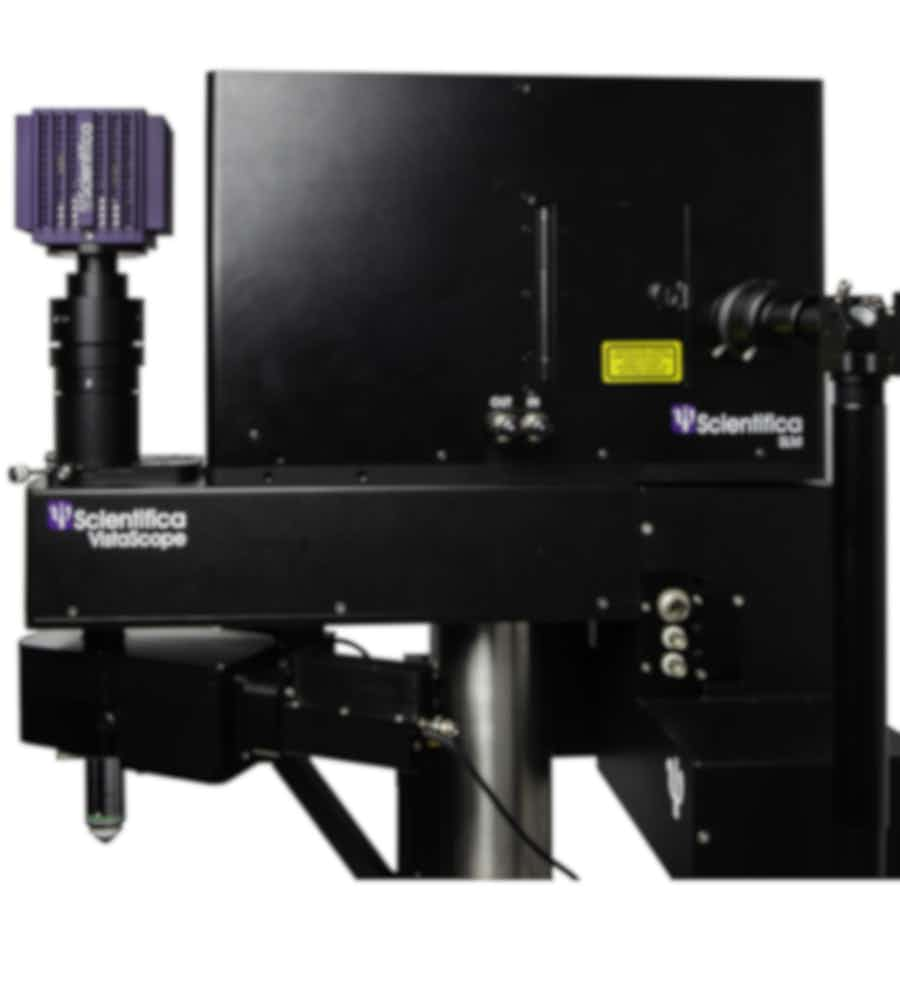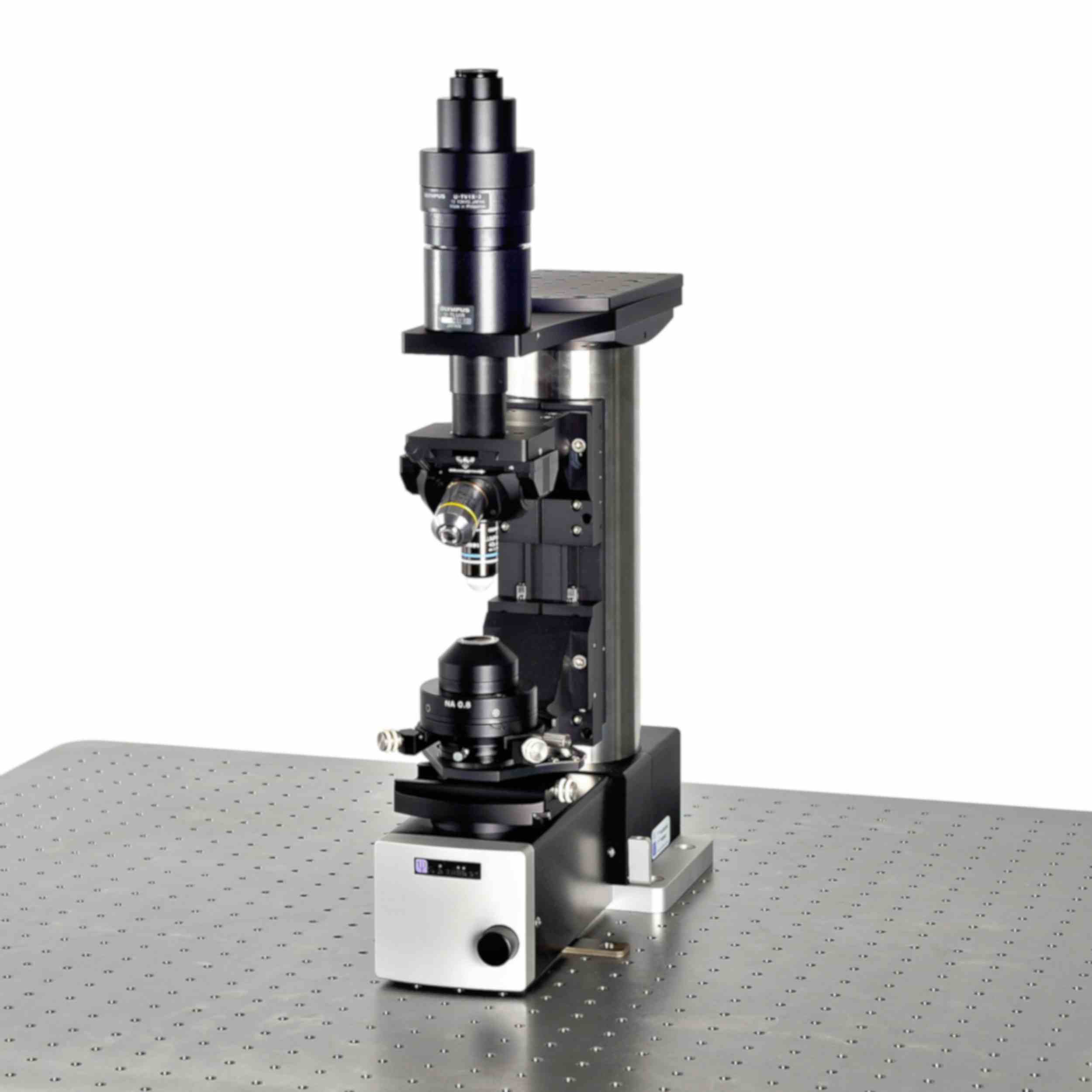Scientifica HyperScope
Push the boundaries of light microscopy and find the answers to the most intricate biological questions with the HyperScope, a proven multiphoton microscope.
Image using two- and three-photon fluorescence excitation with exceptional performance. The HyperScope multiphoton imaging system is a trusted solution that can be customised and upgraded to suit your changing needs. The option of a dual scan head allowing for simultaneous imaging and photostimulation enables you to probe the functional roles of neural cells and circuits.
Product benefits
Tailor your HyperScope to suit your needs and budget
Available with a variety of options for scan head, frame and detector, the HyperScope can be tailored to suit your needs. Existing components in your lab can also be used to build a HyperScope multiphoton imaging system within your budget. This ensures your research is not limited by your funding.
With easily removable covers, the light paths are accessible for customisation. When in the single scanhead configuration, the second mounting position offers a standardised optomechanical interface where visual stimulus and other custom scan paths can be added.
The ability of the HyperScope to combine imaging with other techniques, such as electrophysiology, means your experiments have no limit.
An all-in-one solution for imaging and stimulation
Push the boundaries of light microscopy with the HyperScope, the ideal solution for using the following techniques to investigate biology:
- In vivo and in vitro two-photon imaging
- Three-photon imaging
- Second and third harmonic generation
- Two-photon photostimulation
- Fluorescence lifetime imaging
- All-optical interrogation of neurons with the HoloStim-3D.
A trusted solution for in vivo and in vitro two-photon imaging
Obtain images from both in vivo and in vitro samples with high spatial resolution to answer novel biological questions. The flexibility of the HyperScope enables it to be easily adapted to suit your experimental requirements, ensuring the raw data is high quality, so less processing and analysis is required.
With the option of a tiltable objective, you can retain optimal alignment during in vivo experiments, without having to tilt the animal. Easily switch between a tiltable objective and regular objective mount, for optimal and cost-effective experimental flexibility.

Imaged during the Drosophila course at Cold Spring Harbor in 2017

Z-stacks from in vivo 6 days post fertilisation zebrafish
Two-photon recording from a three week old zebrafish brain explant of the line Tg(elavl3:GCaMP6s-nuclear). Four consecutive planes (upper to lower ones from left to right) of a volumetric recording (8 planes in total) are shown where first Dm (amygdala homolog in zebrafish) then Dl (Hippocampus homolog in zebrafish) were electrically stimulated by a glass-electrode (indicated in the upper left corner). Data acquired by Anna Ostenrath and Ewelina Bartoszek, PhD Students in the lab of Professor Emre Yaksi, Kavli Institute, NTNU.

From left to right: Bovine pulmonary artery endothelial cells labelled with MitoTracker® Red CMXRos for mitochondia, stained with Alexa Fluor® 488 phalloidin for F-actin; Muntjac skin fibroblast, F-actin was labelled with green-fluorescent Alexa Fluor® 488 phalloidin; Mouse kidney section stained with Alexa Fluor® 488 wheat germ agglutin - the filamentous actin prevalent in glomeruli and the brush border were stained with red-fluorescent Alexa Fluor® 568.

The underside of an American Oak leaf, imaged using two-photon excitation. Single focus plane from a 3D image projection of the entire imaged volume. Captured using Scientifica's Hyperscope system at Cold Spring Harbour in 2017.

Stereo image of intact ex vivo central nervous system of a Drosophila melanogaster larva with GCaMP6m expressed in all motor neurons. Image acquired on a Hyperscope with James Macleod, with support from Prof. Stefan Pulver and CSHL.
Three-photon imaging: For clearer imaging at depth
Perform much deeper, clearer imaging into tissue and through scattering layers compared to two-photon imaging, which can lose signal and contrast at depth. The HyperScope is optimised for three-photon imaging across the full 900-1700nm wavelength range.
With three-photon imaging, you can acquire cleaner data at depth, see more cells and image through thin scattering layers. Imaging through superficial layers is possible with a reduced need for invasive surgeries.
The HyperScope optics are available in coatings covering the full multiphoton imaging range: from the standard 700 - 1400nm, and now also the 900 - 1700 nm range that is increasingly popular for in vivo experiments.

3D projection of a mouse olfactory bulb, showing GFP labelling of the olfactory glomeruli and sulforhodamin labelling of the blood vessel network. Data kindly provided by Dr. Tobias Ackels at The Francis Crick Institute using our HyperScope and MDU XL during a three-photon demo.

3P images of nestin-positive cells in the ex-vivo sternum, 200 microns deep using the HyperScope. Red: SHG from the bone structure, Green: 3P excited GFP in nestin positive cells.

Three-photon imaging of interneurons in the mouse neocortex. Neurons are labelled with tdTomato expressed under the VGAT promotor. An imaging depth of 1000 microns was achieved, with the dura left intact.

Mitral cells of the mouse olfactory bulb. Left is with dura and right is without. Top: taken using two-photon imaging. Bottom: imaged with three photons, The three-photon images have a higher contrast and show finer details.

Blood vessels in mouse neocortex labelled with fluorescein. Acquired at 1100um depth using three-photon excitation on Scientifica’s Multiphoton microscope, using an Amplitude Mango SP for excitation. Data kindly provided by Dr Adam Packer, University of Oxford.

The mouse neocortex labelled with CellTracker green. Acquired at 1100um depth using three-photon excitation on Scientifica’s Multiphoton microscope, using an Amplitude Mango SP for excitation. Data kindly provided by Dr Adam Packer, University of Oxford.
Olfactory bulb of a transgenic mouse expressing GCaMP6f in most neurons. Imaged using three-photon excitation. Imaged through the intact dura, through an acute craniotomy.
This fantastic video shows three-photon imaging of neural activity dynamics in mouse neocortical neurons expressing GCaMP6s 1 mm deep in vivo. Data courtesy of Huriye Atilgan and Adam Packer, University of Oxford.
Scientifica services for this product
Perform all-optical interrogation of neural networks
Seamlessly upgrade the HyperScope with the Scientifica HoloStim-3D to create the industry-leading Spatial Light Modulator (SLM) system. This enables simultaneous two-photon imaging and photostimulation of hundreds of individual cells in 3D. This manipulation of neural activity means the functions of neuronal circuits and subtypes can be explored.


Software
Scientifica’s multiphoton hardware is also fully integrated into Vidriotech's ScanImage software packages. Originally developed at Cold Spring Harbour Laboratories and the HHMI Janelia Research Campus, this software is continually developed to add and enhance features for data collection, specifically for neuroscience applications.
The HyperScope is compatible with other custom software packages, due to the use of industry standard interfaces.
Testimonials
Useful articles and guides related to the HyperScope
- Sensitivity of the S1 neuronal calcium network to insulin and Bay-K 8644 in vivo: Relationship to gait, motivation, and aging processes
- Scientifica has optimised and extended the long wavelength performance of the HyperScope
- Two-photon excitation microscopy: Why two is better than one
- Three-photon imaging: How it works
- Scientifica's three-photon satellite event 2019
- Scientifica's three-photon demonstration at the Francis Crick Institute
Speak to one of our experts for details on pricing, features, installation and support.






